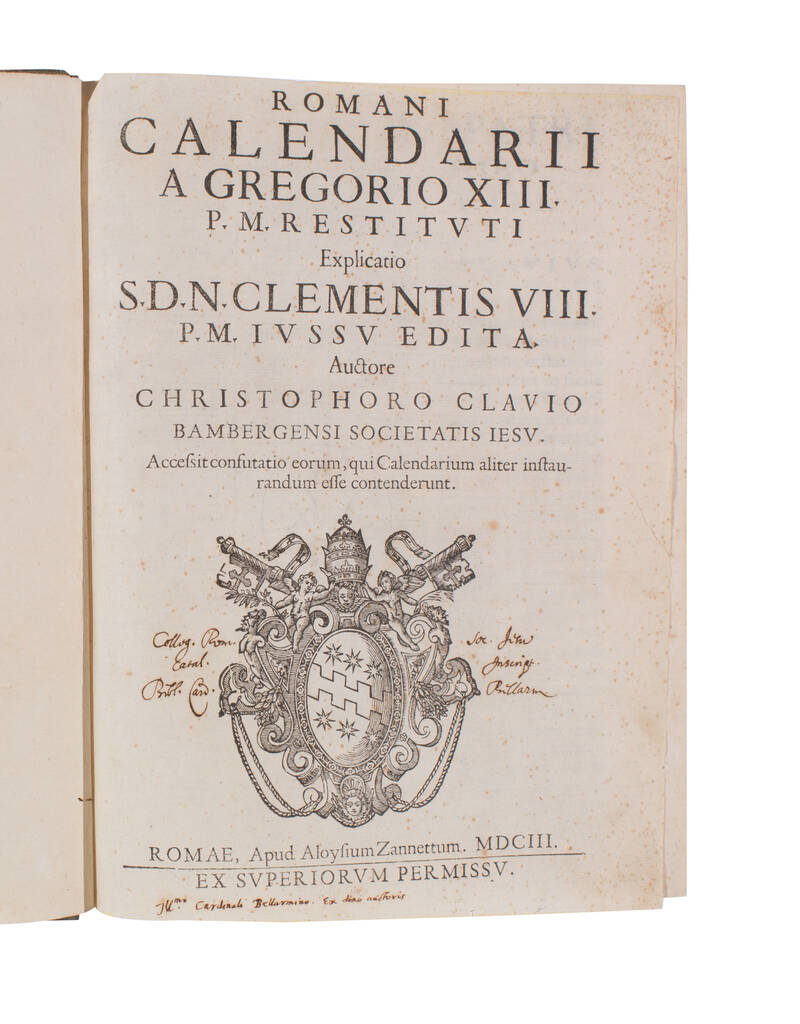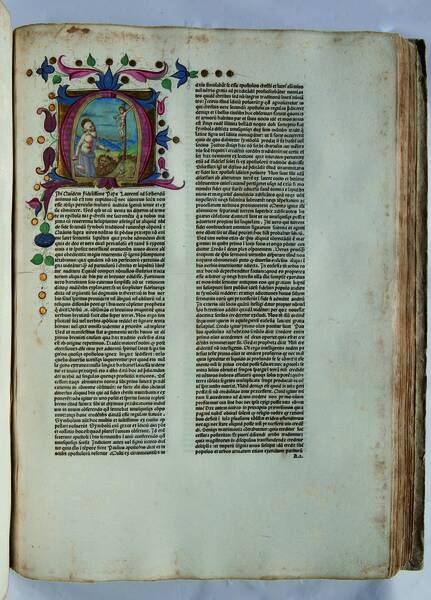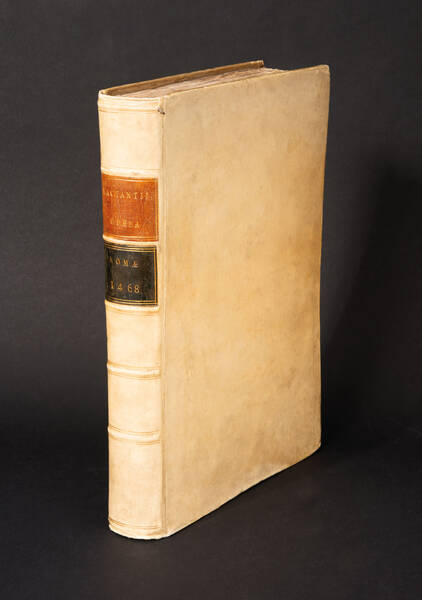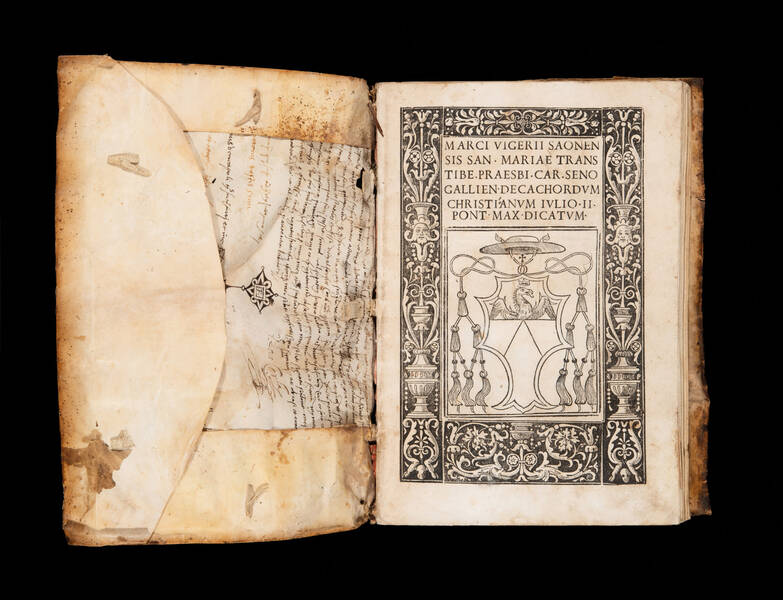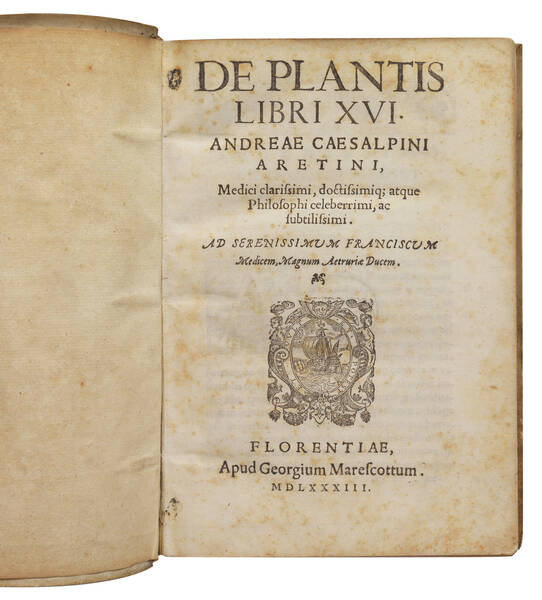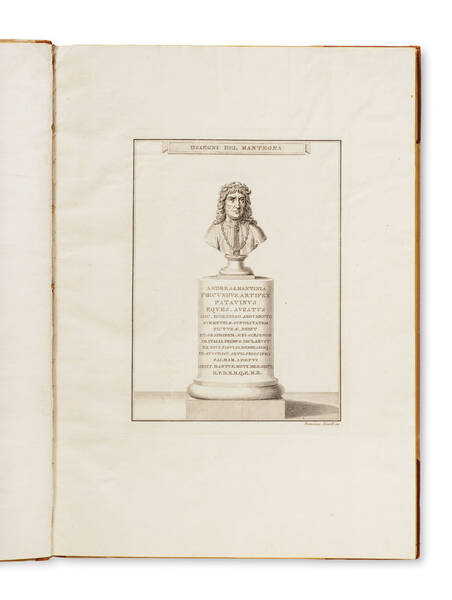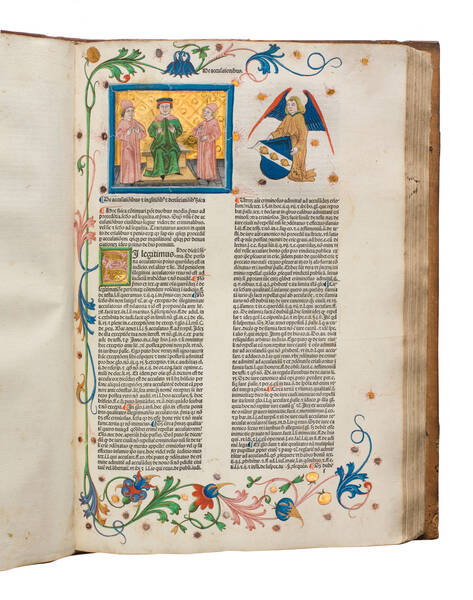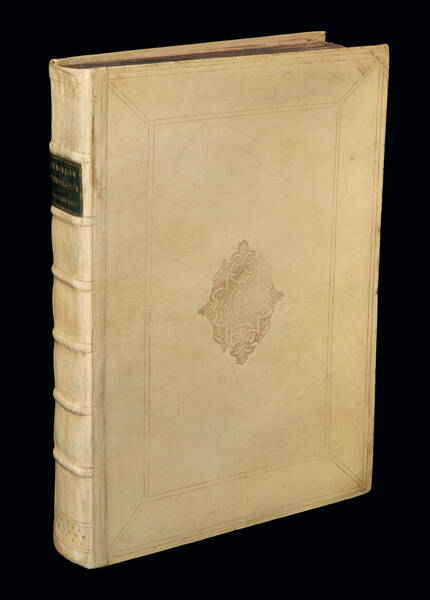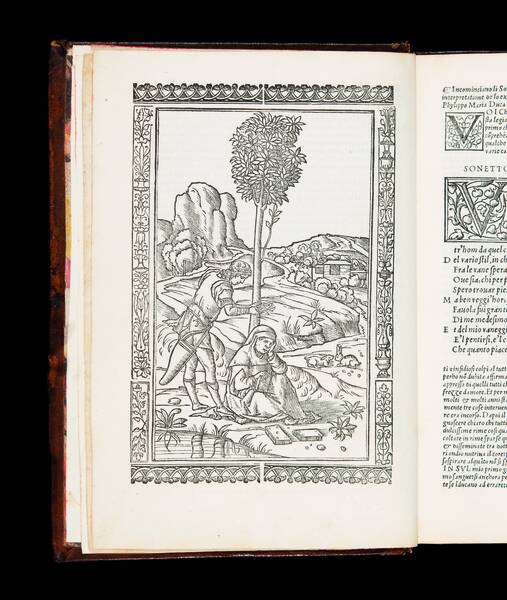CLAVIUS, Christoph. Romani calendarii a Gregorio XIII. P.M. restituti Explicatio S.D.N. Clementis VIII. P.M. iussu edita.
Rome, Aloysius Zanettus., 1603.Folio (310 x 232). Arms of Clement VIII on title, letterpress tables, some with border of printer's flowers, xylographic ornaments. Some spotting, some leaves browned, a good copy with a very interesting provenance boun di eighteenth century green half morocco. Provenance: Robert Bellarmine (1542-1621, Italian Jesuit and cardinal of the Catholic Church, he was canonized a saint in 1930 and named Doctor of the Church; presentation inscription on title, ‘Ill.mi Cardinali Bellarmino ex dono authoris', and a further inscription recording the book's presence in his library at a Jesuit College, Rome.
Presentation copy of the first edition of Clavius's foundation work on the Gregorian calendar. This had been adopted in Catholic countries in 1582 after the proposals for reform, based on Reinhold's ‘Prussian Tables', had been accepted by the Pope. Before the reform ‘the Julian Calendar was naturally adopted by the successor of the Roman Empire, Christian Europe with the Papacy at its head. By about 700 CE it had become customary to count years from the starting point of the birth of Christ (later corrected by Johannes Kepler to 4 BCE). But the equinox kept slipping backwards on the calendar one full day every 130 years. By 1500 the vernal equinox fell on the 10th or 11th of March and the autumnal equinox on the 13th or 14th of September, and the situation was increasingly seen as a scandal. The most important feast day on the Christian calendar is Easter, when the suffering, death, and resurrection of Christ are celebrated. In the New Testament we find that Christ's crucifixion occurred in the week of Passover. On the Jewish calendar, Passover was celebrated at the full moon of the first month (Nissan) of spring. In developing their own calendar (4th century CE), Christians put Easter on the first Sunday after the first full moon after the spring equinox. If the equinox was wrong, then Easter was celebrated on the wrong day. Most other Christian observances (e.g., the beginning of Lent, Pentecost) are reckoned backward or forward from the date of Easter. An error in the equinox thus introduced numerous errors in the entire religious calendar. Something had to be done. After the unification of the Papacy in Rome, in the fifteenth century, Popes began to consider calendar reform. After several false starts, a commission under the leadership of the Jesuit mathematician and astronomer Christoph Clavius (1537-1612) succeeded. Several technical changes were instituted having to do with the calculation of Easter, but the main change was simple. In 1582 Pope Gregory XIII (hence the name Gregorian Calendar) ordered ten days to be dropped from October, thus restoring the vernalequinox at least to an average of the 20th of March, close to what it had been at the time of the Council of Nicea. In order to correct for the loss of one day every 130 years, the new calendar dropped three leap years every 400 years. Henceforth century years were leap years only if divisible by 400. 1600 and 2000 are leap years; 1700, 1800 and 1900 are not.The new calendar, although controversial among technical astronomers, was promulgated from Rome and adopted immediately in Catholic countries. Protestant countries followed suit more slowly. Protestant regions in Germany, and the northern Netherlands adopted the calendar within decades. The English, always suspicious of Rome during this period, retained the Julian Calendar. Further, while others now began the new year uniformly on 1 January, the English began it on 25 March (an older custom). Now, for example, the date 11 February 1672 in England was 21 February 1673 on the Continent. After 1700 in which the Julian Calendar had a leap year but the Gregorian did not, the difference was eleven days. The English and their American colonies finally adopted the Gregorian Calendar in the middle of the eighteenth century. George Washington was born on 11 February on the Julian Calendar; we celebrate his birthday on 22 February.Note, finally, that the Gregorian Calendar is useless for astronomy because it has a ten-day hiatus in it. For the purpose of calculating positions backward in time, astronomers use the Julian Date.' (The Galileo Project)
BL/STC 17th-century Italian I, p.240; Honeyman 717.
Other Books
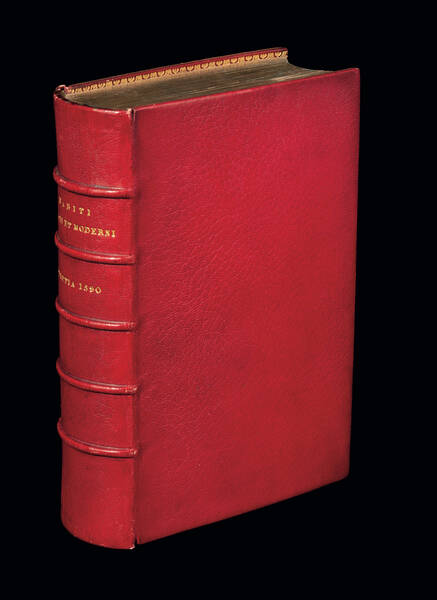
VECELLIO, Cesare
Degli Habiti Antichi, et Moderni di Diverse Parti del Mondo Libri due, fatti da Cesare Vecellio, & con Discorsi da Lui Dichiarati.
SOLD OUT![MORE, Sir Thomas. De optimo reip. statu deque nova insula Utopia ... Epigrammata [with:]DESIDERIUS ERASMUS. Epigrammata. MORE, Sir Thomas. De optimo reip. statu deque nova insula Utopia ... Epigrammata [with:]DESIDERIUS ERASMUS. Epigrammata.](https://www.medariquier.com/typo3temp/pics/9344bb41f5.jpg)
MORE, Sir Thomas; DESIDERIUS ERASMUS
MORE, Sir Thomas. De optimo reip. statu deque nova insula Utopia ... Epigrammata [with:] DESIDERIUS ERASMUS. Epigrammata.
€ 50.000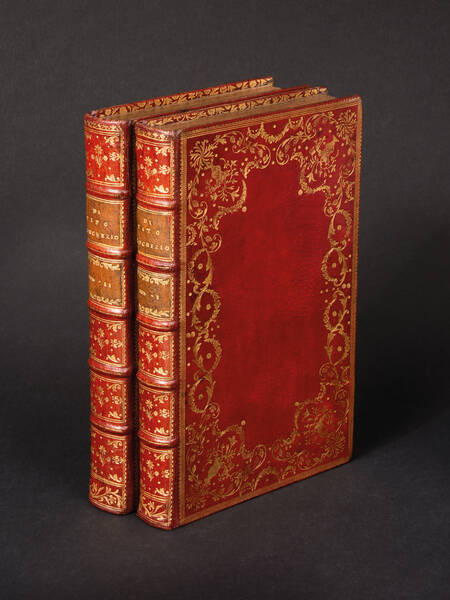
LUCRETIUS, Titus Carus
Della natura delle cose libri sei, tradotti dal Latino in Italiano da Alessandro Marchetti. Dati nuovamente in luce da Francesco Gerbault.
€ 7.000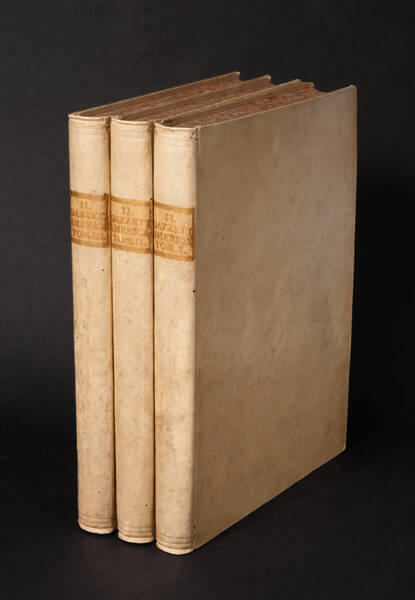
GAZZETTIERE AMERICANO
Il Gazzettiere Americano, contenente un distinto Ragguaglio di Tutte le Parti del Nuovo Mondo.
SOLD OUT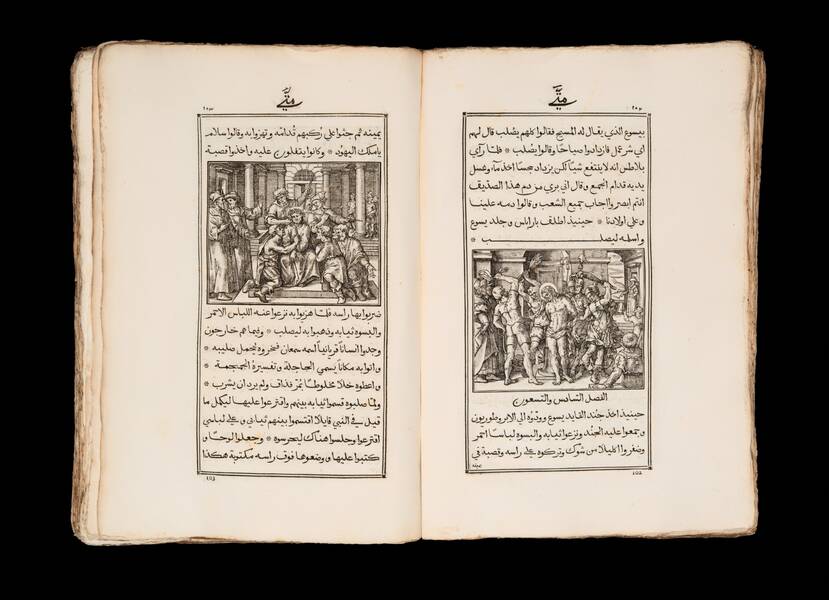
[BIBLIA ARABICA]
Evangelium Sanctum Domini nostri Iesu Christi conscriptum a quatuor Evangelistis sanctis, id est Matthaeo, Marco, Luca et Iohanne.
SOLD OUT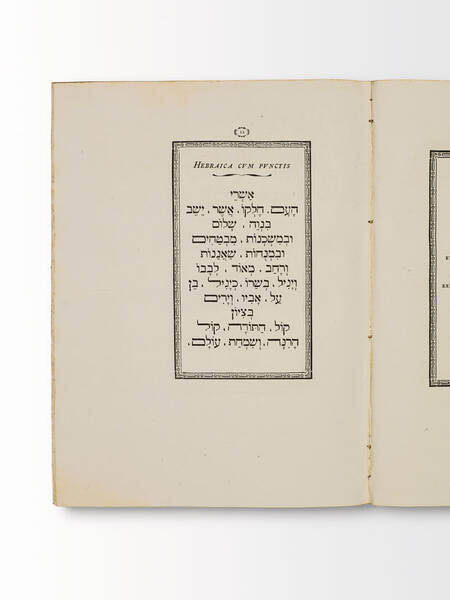
[BODONI]
Pel solenne battesimo di S.A.R. Ludovico Principe primogenito di Parma tenuto al sacro fonte da Sua Maestà Cristianissima e dalla Reale Principessa...
€ 6.000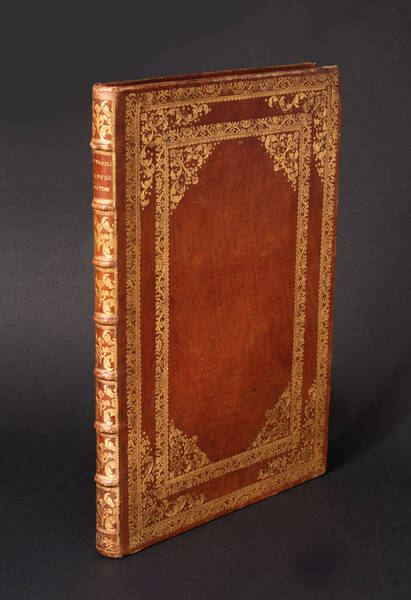
BERRETTINI DA CORTONA PIETRO
Tabulae Anatomicae a celeberrimo pictore Petro Berrettino Cortonensi delineatae, & amp; egregiè aeri incisae nunc primum produent, et a Cajetano...
SOLD OUT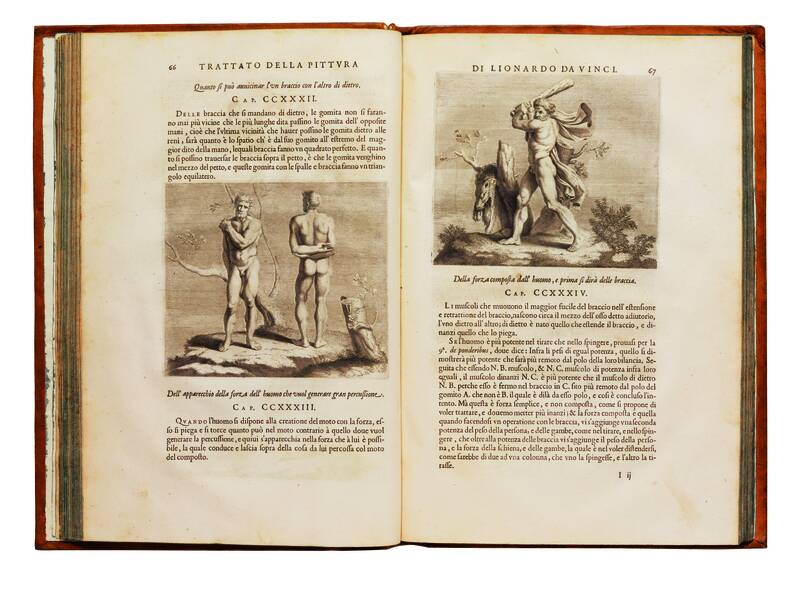
LEONARDO DA VINCI
Trattato della Pittura di Lionardo da Vinci, Nouamente dato in luce, con la vita dell’istesso autore, scritta da Rafaelle Du Fresne. Si sono giunti i...
SOLD OUTMEDA RIQUIER rare books ltd.
4 Bury Street St James's
SW1Y 6AB London
Phone +44 (0) 7770457377
info@medariquier.com
